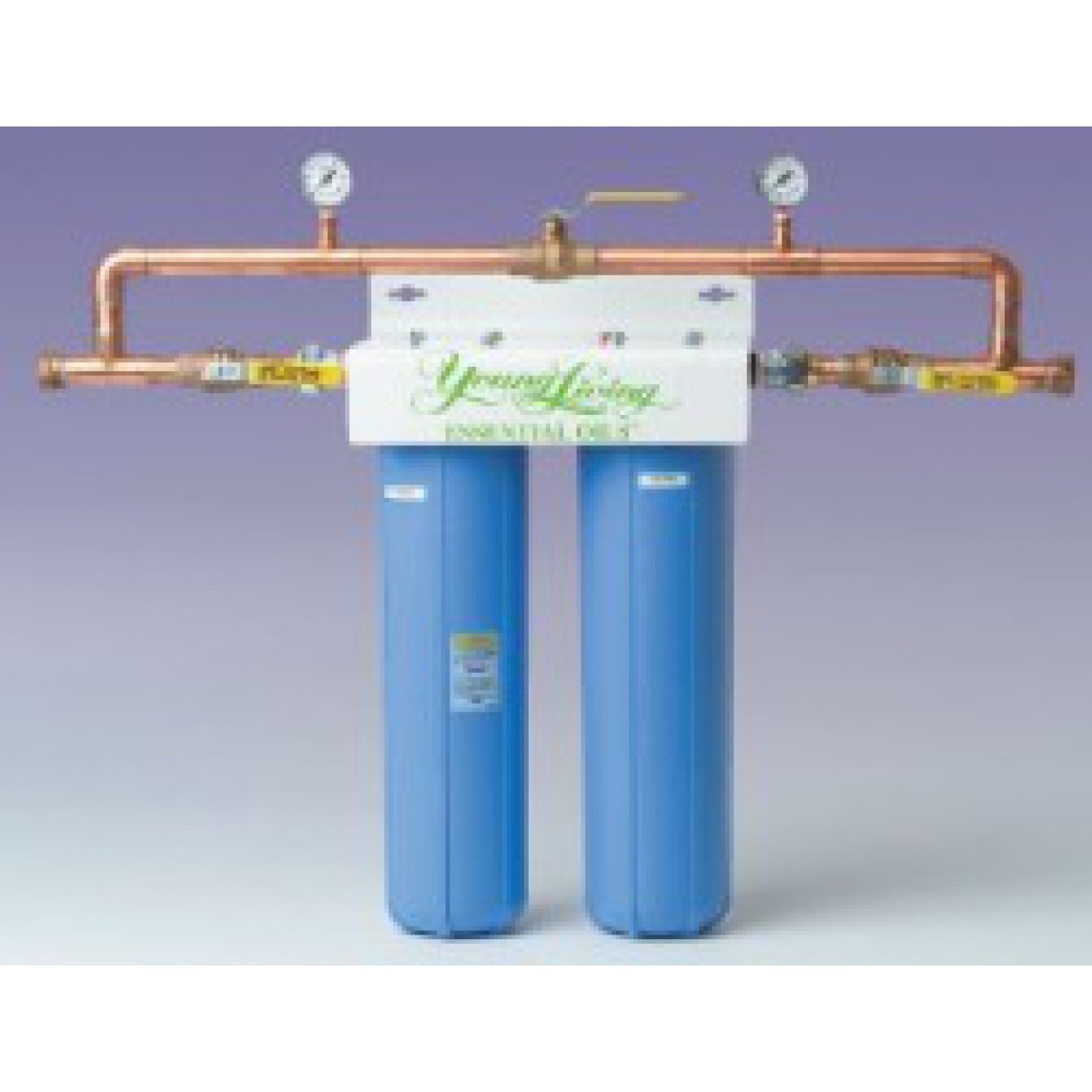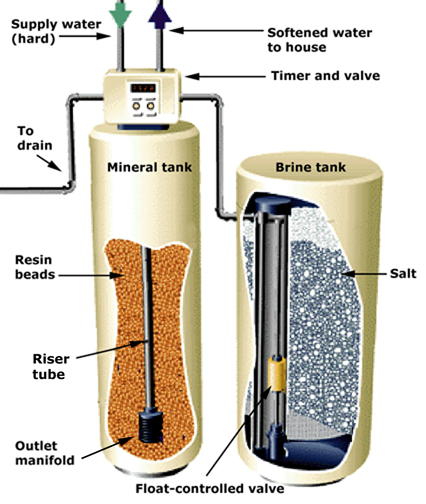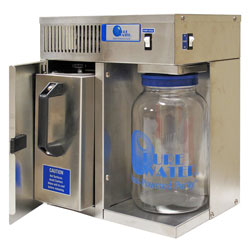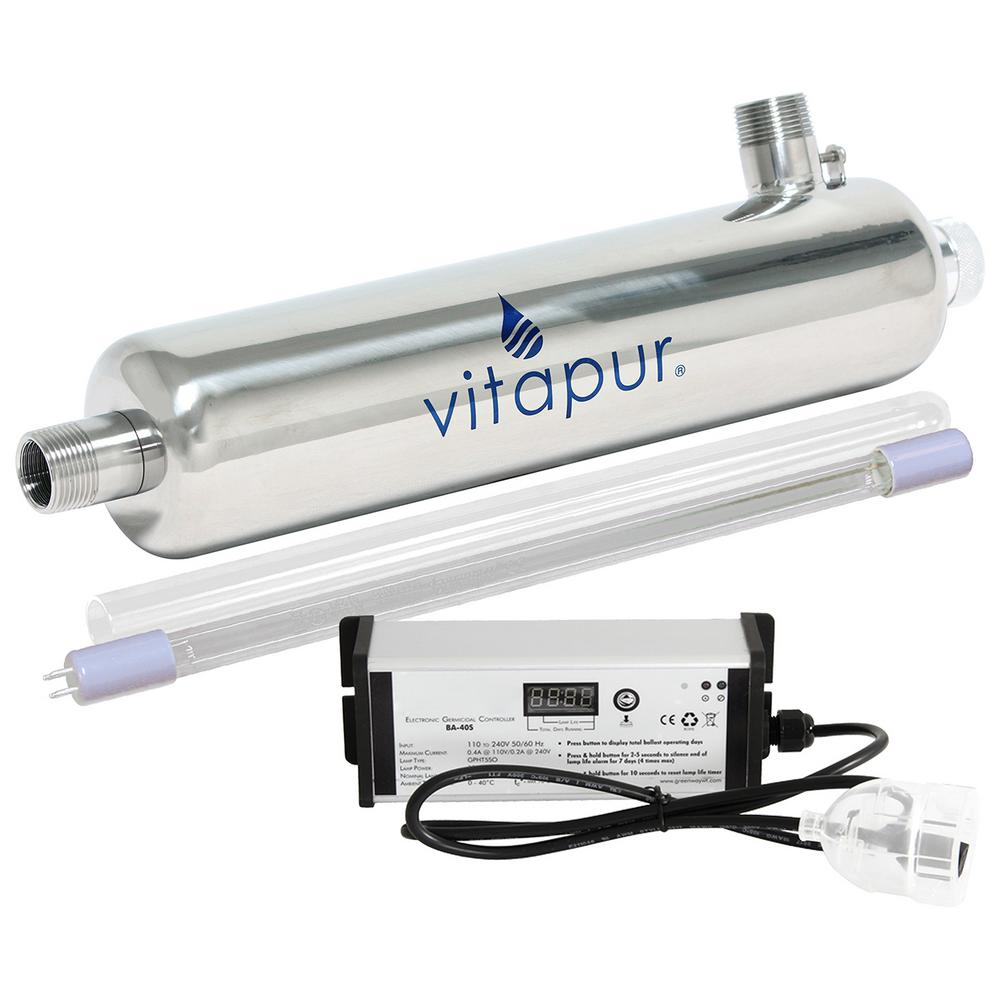common types of household water treatment systems
Filtration Systems
A water filter is a device which removes impurities from water by means of a physical barrier, chemical, and/or biological process. (Water Treatment, 2015)
 Figure 3.1: House watering system that can be directly contacted you plumbing
Figure 3.1: House watering system that can be directly contacted you plumbing
 Figure 3.1: House watering system that can be directly contacted you plumbing
Figure 3.1: House watering system that can be directly contacted you plumbingWater Softeners
A water softener is a device that reduces the hardness of the water. A water softener typically uses sodium or potassium ions to replace calcium and magnesium ions, the ions that create “hardness.”

Figure 3.2: As shown in the diagram above, a typical water softener has a resin (or “mineral”) tank, a brine tank, and some type of control. With a conventional cation-exchange water softener, the house water supply pipe is connected to a control valve and timer at the top of the resin tank. (Vandervort, 2019 )

Figure 3.2: As shown in the diagram above, a typical water softener has a resin (or “mineral”) tank, a brine tank, and some type of control. With a conventional cation-exchange water softener, the house water supply pipe is connected to a control valve and timer at the top of the resin tank. (Vandervort, 2019 )
Distillation Systems
Distillation is a process in which impure water is boiled and the steam is collected and condensed in a separate container, leaving many of the solid contaminants behind. (Littlefield, 2019 )
 Figure 3.3: This is a nice and compact countertop water distiller .One of the advantages of choosing this unit is that you don’t need to assemble or install it.
Figure 3.3: This is a nice and compact countertop water distiller .One of the advantages of choosing this unit is that you don’t need to assemble or install it.
 Figure 3.3: This is a nice and compact countertop water distiller .One of the advantages of choosing this unit is that you don’t need to assemble or install it.
Figure 3.3: This is a nice and compact countertop water distiller .One of the advantages of choosing this unit is that you don’t need to assemble or install it.Disinfection
Disinfection is a physical or chemical process in which pathogenic microorganisms are deactivated or killed. Examples of chemical disinfectants are chlorine, chlorine dioxide, and ozone. Examples of physical disinfectants include ultraviolet light, electronic radiation, and heat.
 Figure 3.4: Ultraviolet water purification is the most effective method for disinfecting bacteria from the water. Ultraviolet (UV) rays penetrate harmful pathogens in your home's water and destroy illness-causing microorganisms by attacking their genetic core (DNA) (APEC Water Systems, 2017 )
Figure 3.4: Ultraviolet water purification is the most effective method for disinfecting bacteria from the water. Ultraviolet (UV) rays penetrate harmful pathogens in your home's water and destroy illness-causing microorganisms by attacking their genetic core (DNA) (APEC Water Systems, 2017 )
 Figure 3.4: Ultraviolet water purification is the most effective method for disinfecting bacteria from the water. Ultraviolet (UV) rays penetrate harmful pathogens in your home's water and destroy illness-causing microorganisms by attacking their genetic core (DNA) (APEC Water Systems, 2017 )
Figure 3.4: Ultraviolet water purification is the most effective method for disinfecting bacteria from the water. Ultraviolet (UV) rays penetrate harmful pathogens in your home's water and destroy illness-causing microorganisms by attacking their genetic core (DNA) (APEC Water Systems, 2017 )